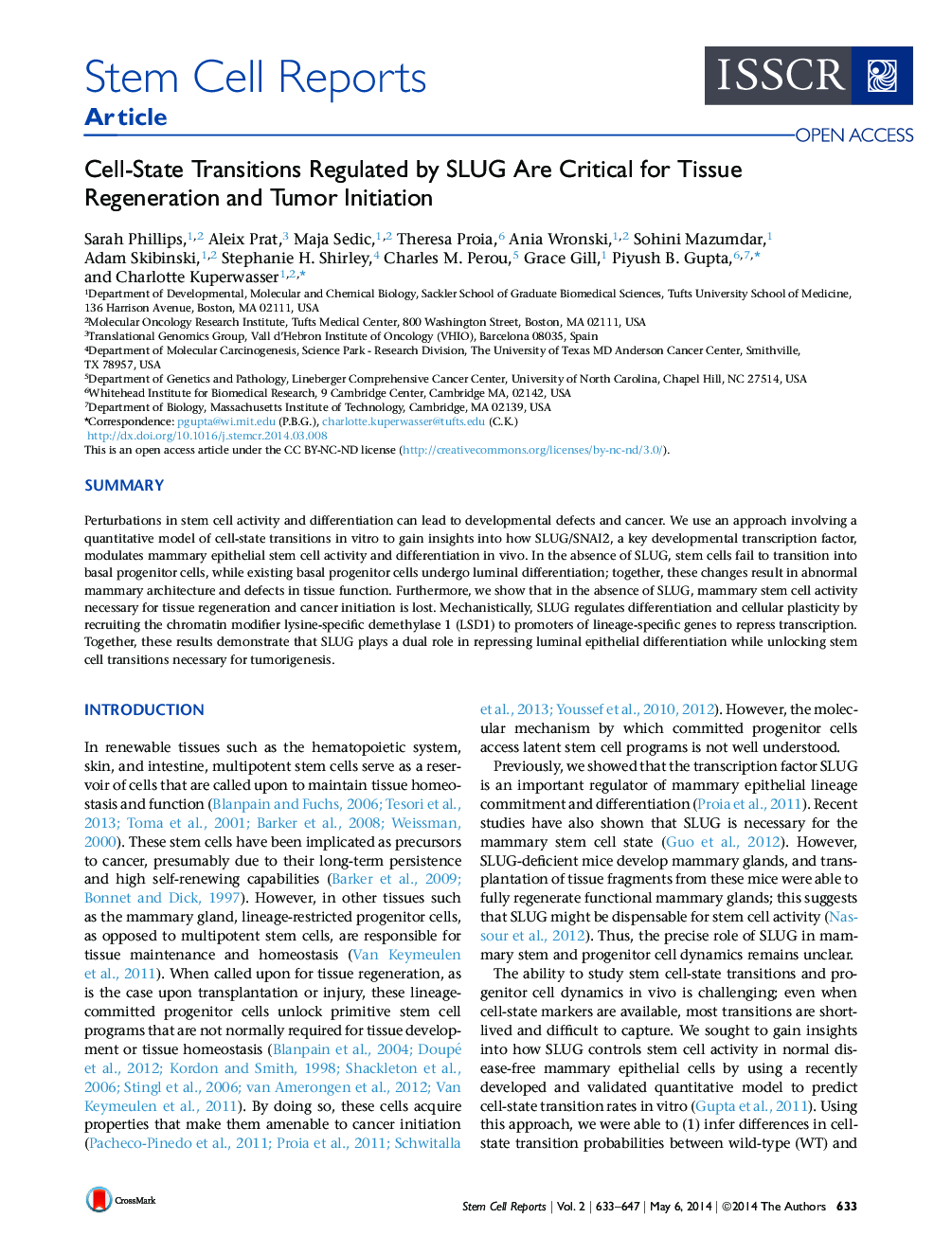| Article ID | Journal | Published Year | Pages | File Type |
|---|---|---|---|---|
| 2093361 | Stem Cell Reports | 2014 | 15 Pages |
•SLUG promotes stem cell-state transitions necessary for tumorigenesis•Loss of SLUG in mice leads to luminal differentiation of basal/myoepithelial cells•In vitro quantitative modeling can accurately predict epithelial plasticity in vivo•A SLUG/LSD1 complex epigenetically regulates mammary epithelial cell differentiation
SummaryPerturbations in stem cell activity and differentiation can lead to developmental defects and cancer. We use an approach involving a quantitative model of cell-state transitions in vitro to gain insights into how SLUG/SNAI2, a key developmental transcription factor, modulates mammary epithelial stem cell activity and differentiation in vivo. In the absence of SLUG, stem cells fail to transition into basal progenitor cells, while existing basal progenitor cells undergo luminal differentiation; together, these changes result in abnormal mammary architecture and defects in tissue function. Furthermore, we show that in the absence of SLUG, mammary stem cell activity necessary for tissue regeneration and cancer initiation is lost. Mechanistically, SLUG regulates differentiation and cellular plasticity by recruiting the chromatin modifier lysine-specific demethylase 1 (LSD1) to promoters of lineage-specific genes to repress transcription. Together, these results demonstrate that SLUG plays a dual role in repressing luminal epithelial differentiation while unlocking stem cell transitions necessary for tumorigenesis.
